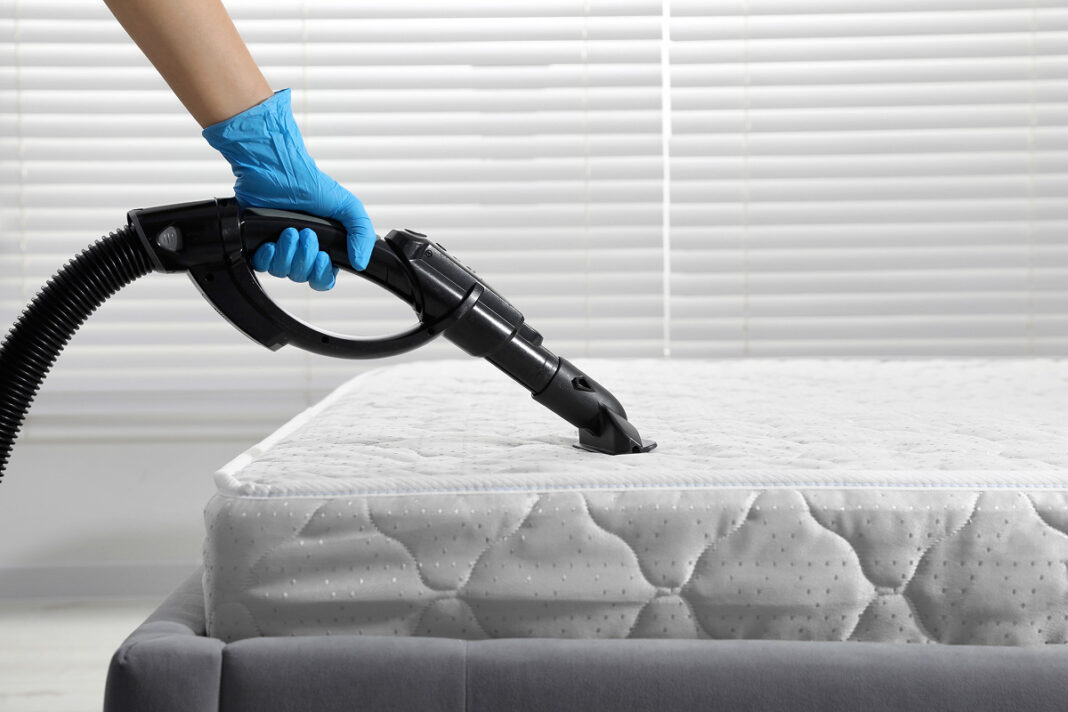Over a period of sustained daily usage, mattresses typically accumulate a large amount of dirt and dust. Additionally, the absorbent nature of mattresses makes it easier for them to pick up offensive scents and smells after continuous usage. To keep one’s mattresses clean, fresh, and usable for longer, deep cleaning them is essential. Hygiene professionals recommend that people thoroughly clean their mattresses at least twice a year to prevent dust, dirt, and allergens.
Steps to Deep Clean a Mattress
Ventilating the Room
Open all windows and doors in the room. Turn on the air conditioning to encourage cross-ventilation. Ensure that the room is not very humid or moist. Ventilating the room helps the mattress dry quickly and removes bad smells and artificial odors.
Checking the Care Guide and Assembling Cleaning Supplies
Different types of mattresses require varying cleaning solutions and techniques. So, make sure to check the mattress manufacturer’s care guide before starting the deep cleaning process. This is mainly because different types of mattresses require different cleaning solutions and methods.
Keeping all the supplies handy before starting the process prevents the hassle of searching for them later. Some useful supplies include a vacuum cleaner, baking soda, mild laundry detergent or dish soap, a cloth or sponge, and lukewarm water.
Stripping the Sheets and Bedding
Remove everything from the mattress that does not belong there, such as detachable fabrics, liners, sheets, covers, protectors, and things that are commonly seen on top of mattresses. Doing so helps separate dirt particles and bad odors present on the sheets. While removing the sheets, carefully fold them so that dust or dirt particles do not fall on the mattress.
Washing Bedding and Pillows
If possible, wash the pillows and bedding in hot water before tumble-drying at a high temperature. This removes the dirt, germs, bacteria, and allergens from the pillows and bedding. This step contributes to a more hygienic sleeping environment and a good rest. Furthermore, to avoid damaging the items, one must check the manufacturer’s guide to see if the pillows and bedding can be machine washed at high temperatures.
Airing Out and Vacuuming the Mattress
A key step to prepare the mattress for deep cleaning is vacuuming it thoroughly on both sides. Without proper vacuuming, a lot of dirt and debris will be left on the mattress’s surface. Use an attachable upholstery tool with the vacuum. During the process, systematically go back and forth width-wise on the mattress until its entire surface area is covered. Use the crevice attachment to remove debris from hard-to-reach areas.
Cleansing the Stains on the Mattress
Dip a cloth or sponge in gentle laundry detergent or dish soap. Now, press it onto the surface of the mattress that shows stains to dissolve them. Once the stain is removed, place the mattress under a fan and allow it to dry.
Deodorizing the Mattress
All the allergens and microscopic debris must be cleaned from the mattress through dusting and sensitive cleansing. Once the surface of the mattress is dry and clean, the next step is to vacuum it again before sprinkling a thin layer of baking soda over it to eliminate any lingering odors on the surface of the mattress. Let the baking soda layer sit on the mattress for at least a few hours to get the best results. Once the mattress surface is fresh-smelling, vacuum off all the remaining baking soda.
Disinfecting the Mattress
To fully deep clean the mattress, mix two fluid ounces of bleach and a gallon of cold water. Spray this combination on the surface of the mattress before thoroughly wiping and cleaning it with a damp rag. Use safety equipment like gloves, masks, and goggles to stay safe from the harmful effects of the bleach. After disinfecting the mattress, leave it to dry.
Cleaning the Bed Frame
The bed frame and other objects near the mattress often worsen its filthiness. Cleaning these objects helps keep the mattress cleaner for longer.
Putting the Bedding and Sheets Back On
Once the mattress is completely dry, put the cleaned bedding and sheets back on before use.
Popular Solutions to Clean Mattresses Naturally
Natural products do not come with the harsh, corrosive properties of artificial cleaning products. One can opt for items like white vinegar and organic baking soda to make the cleaning process more sustainable. Additionally, hydrogen peroxide and essential oils such as peppermint, lavender, and chamomile help remove stains and odors without overtly relying on chemicals.
Ways to Prevent the Growth of Dust Mites on Mattresses
Decluttering Mattresses
By lowering the number of objects on the bed, one can restrict the areas where dust mites can thrive. Remove stuffed animals or decorative pillows from mattresses if they do not add value to one’s sleeping experience.
Lowering Humidity
Dust mites thrive in humid weather. This is why it is advised to maintain the humidity level in the bedroom between 30 and 50 percent with the help of a dehumidifier. Furthermore, running bathroom exhaust fans and air-conditioning makes it difficult for dust mites to survive on the mattress surface.
Other solutions to prevent dust mite infestation include lowering the room temperature, drying the mattress surface thoroughly, and frequently cleaning the carpets.


